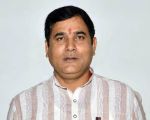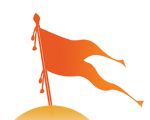Delhi : The fizz has gone flat. The promises of democracy in Nepal now taste like froth – empty, bitter, and vanishing fast. Will political stability ever return to this Himalayan nation? Can a country of three crore people, caught between India and China, offer its citizens more than despair and migration? These haunting questions echo louder each passing day.
“Democracy is an expensive hobby,” quips Professor Paras Nath Choudhary. “To expect a herd of white elephants (politicians) to feed the poor before filling their own coffers is a dream, not reality.” He reminds us that the monarchy once gave Nepal stability, but since embracing democracy in 2008, the country has witnessed 14 governments in 17 years – a carousel of chaos still spinning after the violent student uprisings.
From Hope to Ashes
The September rebellion, sparked by a clumsy social media ban, left more than seventy dead and $600 million in ruins. Prime Minister K.P. Sharma Oli fell within 48 hours, and for a fleeting moment, Chief Justice Sushila Karki’s “online coronation” as interim leader promised a new dawn. But as the smoke cleared, the scenery was painfully familiar: broken promises, fake change, and a public left disillusioned yet again.
The Calm Before the Next Storm
Curfews have lifted, and the streets look quiet, but the revolution hasn’t ended. On TikTok and Discord, young Nepalis are still demanding electoral reforms, an end to corruption, and justice for the fallen. Is Nepal now trapped in a “blocked revolution,” where unresolved rage could spill into bloodshed, dictatorship, or foreign intervention?
A Government Without Ground
Since 2008, not a single government has lasted its full term. The interim administration faces impossible deadlines – elections by March 2026, justice for victims, and rebuilding public trust. But faith is missing.
The economy, already fragile, is now shattered. Growth projections of 4.5% for 2025 have collapsed to near zero. The damage: 3 trillion rupees ($22.5 billion) – half the nation’s GDP. Tourism has evaporated, businesses have shuttered, and investors have fled.
Living on Borrowed Breath
Nepal does not survive on its own strength. It breathes through remittances and India’s lifeline. Every day, 2,000 young Nepalis leave the country for work abroad. Remittances, 30% of GDP, are both a blessing and a curse – sustaining families but hollowing out society.
Agriculture still employs the majority but fails to feed the population, forcing food imports worth 400 billion rupees annually. Industry contributes just 5–6% of GDP, mainly from selling edible oil to India. In short, Nepal imports life itself – fuel, electricity, grain, machinery – all from India.
Meanwhile, 10–15 lakh Nepalis toil in India, sending back $2–3 billion each year. This dependence is both Nepal’s crutch and chain.
The Young, Restless, and Unemployed
Nepal’s greatest resource – its youth – is also its greatest crisis. Educated and digitally connected but jobless, they face unemployment rates above 20%. Per capita income is stuck at $1,400, and one in five people still live in poverty. Their future is migration; their reality, exploitation.
The Darkest Tragedy
Each year, between 5,000 and 10,000 Nepali women and girls are trafficked into India’s flesh trade. Over one lakh remain trapped in brutal exploitation, invisible in brothels and cities. Despite decades of awareness drives and rescue missions, the numbers barely change. It is the most painful proof that political decay translates directly into human suffering.
Sandwiched Between India and China
Nepal’s helplessness must transform into dignity. India, as its closest partner, must extend genuine support rather than discrimination. And Nepalis themselves must recognize that India is their evergreen ally, while China lurks as an opportunist. But without courage in Kathmandu to uproot corruption and rebuild domestic productivity, Nepal risks falling deeper into the abyss of instability.





